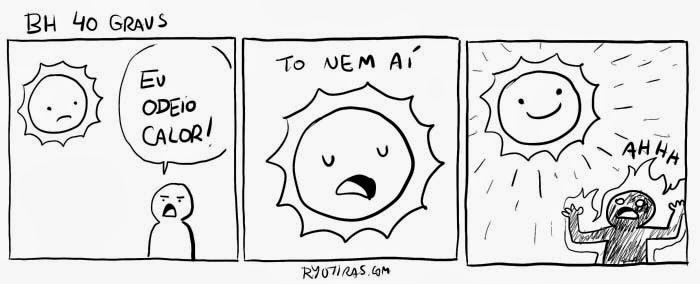Shared posts
RSS and the Open Web

This post is not about the day to day operations of The Old Reader or anything of that nature. It’s about how our team came to get involved with RSS and how we see the future of this application and technology that we value so highly.
As a long time user of RSS and Google Reader, I’ve long appreciated the benefits of the technology. Like many people, my use of Google Reader faded a bit as social media platforms took hold. But, I’d always go back to Google Reader when I wanted to cut through the noise of social networks and focus on things I’m really passionate about. Google Reader wasn’t my “second screen” application where I’d go to take a break from work. It filled a much more essential need for me by providing these three features:
1. Unread items are kept in a queue. I don’t miss things. No algorithm chooses what to show me or not show me.
2. It’s an archive of blogs that I value and posts that I’ve read.
3. I can follow whatever I want from anywhere on the web. It embodies the open web.
For my professional career in web research and development, I can’t really live without these features. I can follow twitter feeds or like Facebook pages, but I’m certain to miss important content from people who I highly value. I need those items queued, archived, and I need to be able to subscribe to anybody on the entire open web. I can’t be limited to those authors who choose to enter into private social networks and I don’t want to have to constantly check my accounts for updates.
So this leads me to how we got involved in The Old Reader. When Google Reader shut it’s doors, my business partner Jim did some research and tried several services and suggested I’d like The Old Reader the best. So we both moved on over. I read some articles trying to understand why Google Reader would shut down and one really stuck with me. It hypothesized that Google had been following the lead of companies like Facebook and Twitter by turning their backs on the open web and trying to build their own private/closed social networks. It’s frankly hard to argue against this theory.
However, we see this trend of migrating from the open web to private networks as cyclical. How long will it be before your Facebook stream is so full of promoted content, bizarre algorithmic decisions, and tracking cookie based shopping cart reminders that you won’t be getting any valuable information? For as little as $60, a business can promote a page to Facebook users. It won’t be long before your news feed is worthless. So we jumped at the opportunity to get involved with developing and managing The Old Reader. We believe in it.
As we’ve been looking to grow our engineering team at Levee Labs and The Old Reader we’ve met with a number of bright young people that are surprisingly unaware of RSS. They say “I recognize the RSS icon, but haven’t really ever used it.” Is it possible that there is a lost generation of internet users that are completely unfamiliar with RSS? Are they unfamiliar with the idea of the open web too? We believe that’s the case and we’ve been working hard to come up with ideas that’ll expose that generation to RSS, The Old Reader, and the open web. It’s what made the internet great to begin with and it’s coming back.
Thanks for using The Old Reader!
This is a great site for my 4am insomnia.
Thanks! But you know what happens if you feed your brain too much Tumblr after midnight…
First you’re like this:

Then you’re like this:

And if you’re not careful you’ll end up like this:


But maybe the science side of Tumblr is an exception? :)
Of course, this could just as easily be replaced with late-night YouTube viewing. But certainly not Facebook, because that’s never exciting, no matter what time of day it is.
só 60 pixels. e toda a diferença!
Imagine uma tela de 60 pixels. e só. e em tons de cinza, nada de cor. uma espécie de programma 101 dos displays, se a gente fosse voltar 50 anos. e a 101 nem tela tinha, quase a mesma coisa de “só” 60 pontos, em tons de cinza. mas mude o cenário: e se… estes 60 pontos fossem parte de um implante de retina e um paciente de retinite pigmentosa pudesse, ao usá-los, “ver” de novo?
um laptop padrão tem perto de 1 megapixel; o iPhone 5 tem 700 mil e o samsung note 3 mais de 2 milhões. o olho humano tem 576 megapixel e propriedades que deixam fabricantes de sistemas óticos para trás; exemplo? cada um de seus pixels pode separar 10 milhões de cores e 1 bilhão de níveis de luminosidade [contraste]. no meio disso tudo, meros 60 pontos? sim; 60 pontos podem fazer a diferença da cegueira completa para a identificação de sombras e formas e até letras grandes. é isso que o implante ARGUS II, escolhido uma das invenções mais importantes do ano no EUA, faz. parece básico, e é mesmo. tem um óculos, câmera, transmite informação para um processador na cintura do usuário, retorna o resultado para estimuladores que transmitem para um implante no olho. muita coisa. mas lembre que estamos falando do “programma 101” dos implantes oculares, e que pode ser usado agora, por muita gente que não vê nada, pra ver o suficiente para se mover sozinho, sem ajuda de bengala ou cães. quase mágica, pois.
veja o vídeo. e imagine o que vai rolar daqui a 25, 50 anos. pra comparar, veja o link que leva à programma 101 e pense no que rolou nos últimos 50 anos.
xchellabella: You guys have no idea how much money I’d save...

You guys have no idea how much money I’d save because I just wanna see the cat all the time.
New Animal and Insect Assemblages Made from Repurposed Objects by Edouard Martinet

Butterfly. 25″ x 14″ x 22″ H. Legs: bike brake parts, pieces of windshield wipers, bike chains. Abdomen: old acetylene light tank. Thorax: car suspension part, small spoon parts, cream chargers. Head: headlights, bike parts. Butterfly trunk: clock springs. Hair: pieces of a typewriter daisy wheel. Antennae: brake cables, drawer knobs.
 Butterfly, detail.
Butterfly, detail.

Butterfly, detail.
 Rhinoceros beetle. 13″ x 11″ x 6″ H. Legs: bike brake parts, bike derailleur chain, bike chain ring. Head and horn: small bike brake, pieces of a typewriter daisy wheel. Antennae: small bike parts. Thorax: shoe tree, bike Luxor headlight. Abdomen: motorbike light, shell-shaped drawer handles.
Rhinoceros beetle. 13″ x 11″ x 6″ H. Legs: bike brake parts, bike derailleur chain, bike chain ring. Head and horn: small bike brake, pieces of a typewriter daisy wheel. Antennae: small bike parts. Thorax: shoe tree, bike Luxor headlight. Abdomen: motorbike light, shell-shaped drawer handles.

Rhinoceros beetle, detail.

Three-spined stickleback. 34″ x 5″ x 13″ H. Body: moped fenders and chain guards. Bones: tablespoons. Gills: car door parts. Fins: cake tins, fish slices, compasses. Tail: motorbike silencer, fish slices. Eyes: flashlights. Head: Solex front fenders.
 Moth. 31″ x 16″ x 7″ H. Wings: moped chain guards (rusted and patinated). Abdomen: motorbike headlights. Thorax: very old car headlamp. Legs: large upholstery tacks, car boot hinges, pieces of windshield wipers, bike brake parts, chain guards. Head: old rear position lamps, bike parts, pieces of a daisy wheel. Butterfly trunk: clock springs. Antennae: aluminium heating resistor.
Moth. 31″ x 16″ x 7″ H. Wings: moped chain guards (rusted and patinated). Abdomen: motorbike headlights. Thorax: very old car headlamp. Legs: large upholstery tacks, car boot hinges, pieces of windshield wipers, bike brake parts, chain guards. Head: old rear position lamps, bike parts, pieces of a daisy wheel. Butterfly trunk: clock springs. Antennae: aluminium heating resistor.
 Moth, detail.
Moth, detail.

Wasp. 11″ x 6″ x 16″ H. Abdomen: steel tips for boots, bike headlights. Thorax and head: steel tips and bells from bikes and typewriters. Eyes: vintage watch case. Antennae: spectacles arms. Legs: bike brakes, bike chain, spoon handles. Wings: glass.

Red ant. 25″ x 16″ x 9″ H. Thorax and head: sauce spoons, car parts. Eyes: marbles. Abdomen: bike or motorbike headlights. Antennae: small bike chains. Legs: cream chargers, brake parts, chains, alarm clock feet, spoon handles.

Dragonfly. 37″ x 49″ x 15″ H. Abdomen: patinated copper/brass bicycle pump, car horn part, parts of old acetylene bike lights (at the ends). Thorax: two motorbike rear lights, shell-shaped drawer handles, big upholstery tacks. Head: car or lorry old stop lights, parts of acetylene bike lights, parts of a daisy wheel for typewriter (hair from the mouth). Legs: tubes, bike cable guide, wing nuts, wire. Wings: umbrella ribs, wire, wire netting for hen coops.

Dragonfly, detail.
When looking at these perfectly assembled sculptures by French artist Edouard Martinet (previously) it’s difficult to believe the raw materials he used ever existed in another form. Yet every head, thorax, leg, wing, and eye from these assorted creatures was once part of a car, bicycle, typewriter, or other found object. Reading through his material lists it becomes clear how completely thorough and judicious Martinet is in selecting the perfect objects to realize his vision, truly a master of his craft. Via Sladmore Contemporary:
His degree of virtuosity is unique: he does not solder or weld parts. His sculptures are screwed together. This gives his forms an extra level of visual richness – but not in a way that merely conveys the dry precision of, say, a watchmaker. There is an X-Factor here, a graceful wit, a re-imagining of the obvious in which a beautifully finished object glows not with perfection, but with character, with new life. Martinet takes about a month to make a sculpture and will often work on two or three pieces at the same time. It took him just four weeks to make his first sculpture and 17 years for his most recent completion!
If you want to see these new pieces up close, Martinet opens a new exhibition at Sladmore Contemporary in London, November 27 through January 31, 2014. You can see several additional new works on his website.
New Plan: Let's All Move to Iceland
Caught in a Revolving Door of Unemployment
Some economists fear that the long-term unemployment crisis affecting millions of Americans might be a permanent change, with far-reaching and damaging consequences.
To this I have been witness.
From the NYT.
See The First 'Selfie' In History Taken In 1839
Actual Advice Mallard on getting suckered into Black Friday sales
 |
submitted by leif_odep to AdviceAnimals [link] [309 comments] |
The answer does not program

Logan’s life is changed when he surrenders an ankh found on a particular runner. Instead being asked to identify, the central computer merely stays quiet a long while as it scans the objects. Then its lights shut off, and Logan has a discussion with the computer he has never had before.
The computer asks him to “approach and identify.” The computer gives him, by name, explicit instructions to sit facing the screen. Lights below the seat illuminate. He identifies in this chair by positioning his lifeclock in a recess in the chair’s arm, and a light above him illuminates. Then a conversation ensues between Logan and the computer.

The computer communicates through a combination of voice and screen, on which it shows blue text and occasional illustrative shapes. The computer’s voice is emotionless and soothing. For the most part it speaks in complete sentences. In contrast, Logan’s responses are stilted and constrained, saying “negative” instead of “no,” and prefacing all questions with the word, “Question,” as in, “Question: What is it?”















On the one hand it’s linguistically sophisticated
Speech recognition and generation would not have a commercially released product for four years after the release of Logan’s Run, but there is an odd inconsistency here even for those unfamiliar with the actual constraints of the technology. The computer is sophisticated enough to generate speech with demonstrative pronouns, referring to the picture of the ankh as “this object” and the label as “that is the name of the object.” It can even communicate with pragmatic meaning. When Logan says,
“Question: Nobody reached renewal,”
…and receives nothing but silence, the computer doesn’t object to the fact that his question is not a question. It infers the most reasonable interpretation, as we see when Logan is cut off during his following objection by the computer’s saying,…
“The question has been answered.”
Despite these linguistic sophistications, it cannot parse anything but the most awkwardly structured inputs? Sadly, this is just an introduction to the silliness that is this interface.
Logan undergoes procedure “03-033,” in which his lifeclock is artificially set to blinking. He is then instructed to become a runner himself and discover where “sanctuary” is. After his adventure in the outside performing the assignment he was forced to accept, he is brought in as a prisoner. The computer traps him in a ring of bars demanding to know the location of sanctuary. Logan reports (correctly) that Santuary doesn’t exist.



On the other hand, it explodes
This freaks the computer out. Seriously. Now, the crazy thing is that the computer actually understands Logan’s answer, because it comments on it. It says, “Unacceptable. The answer does not program [sic].” That means that it’s not a data-type error, as if it got the wrong kind of input. No, the thing heard what Logan was saying. It’s just unsatisfied, and the programmer decided that the best response to dissatisfaction was to engage the heretofore unused red and green pixels in the display, randomly delete letters from the text—and explode.That’s right. He decided that in addition to the Dissatisfaction() subroutine calling the FreakOut(Seriously) subroutine, the FreakOut(Seriously) subroutine in its turn calls Explode(Yourself), Release(The Prisoner), and the WhileYoureAtItRuinAllStructuralIntegrityoftheSurroundingArcitecture() subroutines.










Frankly, if this is the kind of coding that this entire society was built upon, this whole social collapse thing was less deep commentary and really just a matter of computer Darwinism catching up with them.




Study shows diet alone can be significant source of arsenic
TadeuThey found arsenic in toenail clippings is most strongly linked with consumption of alcohol -- especially beer for men and white wine for women -- and Brussels sprouts. Those who drank more alcohol and ate more Brussels sprouts had more arsenic in their toenail clippings, which makes sense because alcoholic beverages can have higher arsenic content and are known to interfere with the metabolic pathways that detoxify arsenic.
...
Fish generally contain a form of arsenic that is thought to safely pass through the human body without being metabolized, but dark meat fish also contain arsenic compounds that can be metabolized.
Who learns from the carrot, and who from the stick? Scientist have demonstrated that serotonin and dopamine related genes influence how we base our choices on past punishments or rewards. This influence depends on which gene variant you inherited from your parents.
An exploded star some 3.8 billion light-years away is forcing scientists to overhaul much of what they thought they knew about gamma-ray bursts.
Archaeologists discover largest, oldest wine cellar in Near East: 3,700 year-old store room held 2,000 liters of strong, sweet wine
enderbabby: divinator: civil-anarchy: danipanteez: mr-leach: ...
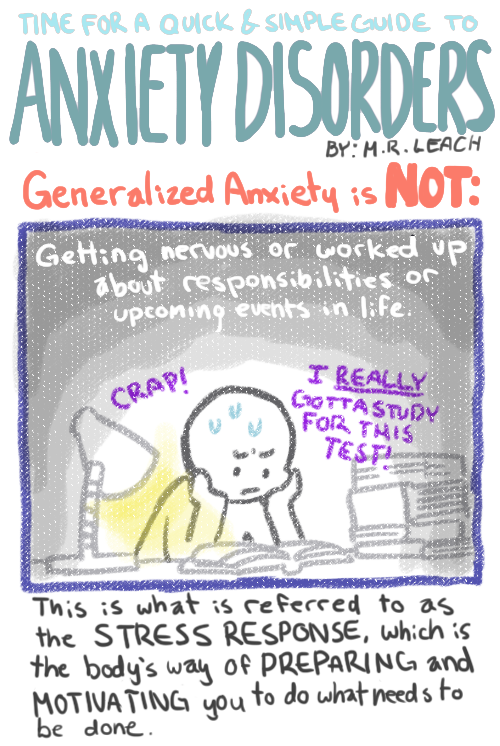
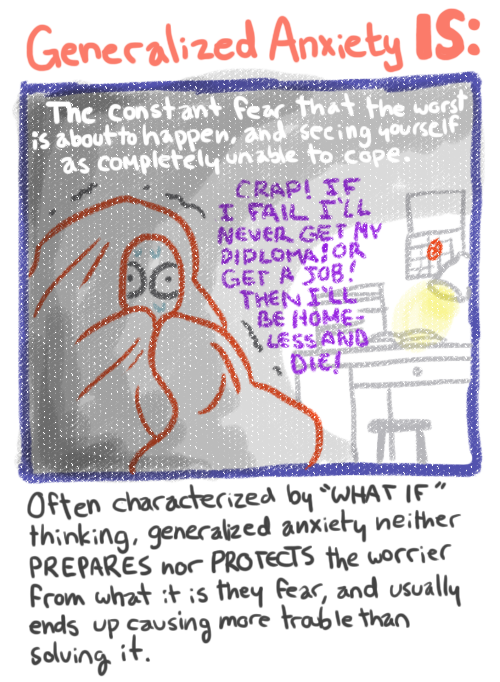



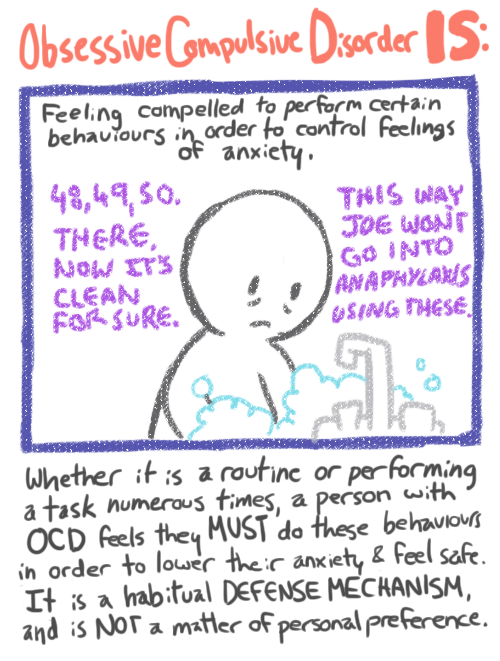
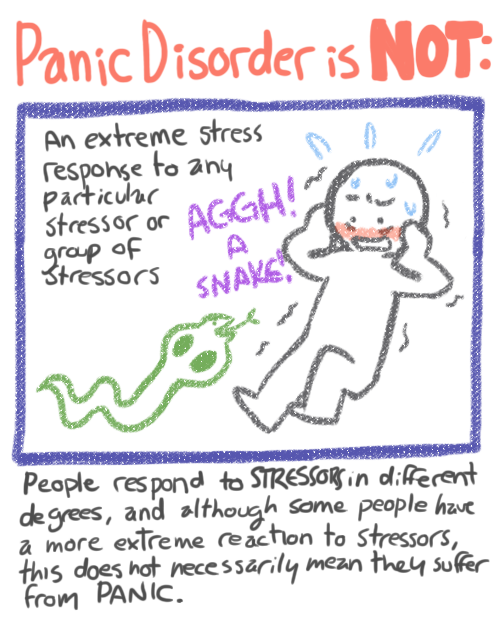


Some things I’ve learned in the CBT clinics I’ve been going to regarding anxiety that I thought might be helpful to some.
for real though. i have tried so hard to explain these things to people. jfc.
Listen up, Snowflakes.
fun little thing to tack on: triggers ARE NOT things that make you uncomfortable or uneasy, they are material that lead to visceral reactions/flash backs/panic attacks due to previous traumas
they aren’t even phobias
they are related to ptsd, not general discomfort or fear
sometimes i think that people need this polite reminder
joshbyard: Google’s Machine Learning Algorithms Outpacing...

Google’s Machine Learning Algorithms Outpacing Engineers’ Ability to Understand How they Work
“Google no longer understands how its “deep learning” decision-making computer systems have made themselves so good at recognizing things in photos.
What stunned [Google Software Engineer] Quoc V. Le is that the software has learned to pick out features in things like paper shredders that people can’t easily spot – you’ve seen one shredder, you’ve seen them all, practically. But not so for Google’s monster.
Many of Quoc’s pals had trouble identifying paper shredders when he showed them pictures of the machines, he said. The computer system has a greater success rate, and he isn’t quite sure how he could write a program to do this.
Google researchers can no longer explain exactly how the system has learned to spot certain objects, because the programming appears to think independently from its creators, and its complex cognitive processes are inscrutable. "
(via The Register ht algopop)
All those gigantic server farms… they’ve accidentally exceeded the critical synapse number, haven’t they.
Life is stirring in the depths…
Pertussis re-emerges because of anti-vaccine parents
"The problem, in part, is that the protection offered by the pertussis vaccine wears off by the time you reach adulthood. Until recently, however, this was not a problem. Back in those halcyon days when we vaccinated our children, the disease was not bouncing around our population and so it was okay that adults did not get re-immunized. (That's the whole point of herd immunity: it's hard to get sick from people who aren't sick...Graph credit Jen Kirby, based on data from the CDC. Via The Dish.
"How responsible are these non-vaccinating parents for my pertussis? Very. A study recently published in the journal Pediatrics indicated that outbreaks of these antediluvian diseases clustered where parents filed non-medical exemptions – that is, where parents decided not to vaccinate their kids because of their personal beliefs. The study found that areas with high concentrations of conscientious objectors were 2.5 times more likely to have an outbreak of pertussis."
Here’s the Israeli start-up behind Bob Dylan’s great new interactive video

The internet practically burst into applause on Tuesday with the launch of an interactive video for Bob Dylan’s “Like a Rolling Stone,” which lets viewers flip between channels on a virtual TV to watch a celebrity-studded group of lip-synchers. But it’s the only latest in a string of attention-grabbing videos from Interlude, a Tel Aviv-based start-up that is run by Israeli musician and self-professed tech geek Yoni Bloch.
When he started Interlude, Bloch was already a well-established guitarist and singer in Israel, where he made a series of interesting videos using methods like stop motion animation:
Interlude—which scored a $15 million round of funding earlier this year from venture capital firms including Intel Capital, Sequoia Capital, and Google Chairman Eric Schmit’s Innovation Endeavors—made its name with “choose your own adventure” web videos that let users navigate through a decision tree of plot choices, winning awards for innovation from MTV and Intel. A video on Bloch’s own site, for example, prompts viewers to guide him through a house party, handing off a set of headphones to different guests.
The company also offers tools to let users create their own interactive videos, but the company’s real business opportunity—and likely the selling the point for its recent venture capital round—is its ability to work with advertisers. The company’s website carries examples of work for Madewell, Subaru, MAC, Goldfish, and Shell. After all, Bob Dylan may have been accused of selling out when he went electric with “Like a Rolling Stone,” but for an ambitious start-up, that’s no insult at all.
Glitch Free: Art From Closed MMO Enters Public Domain
By Graham Smith on November 18th, 2013 at 5:00 pm.

Glitch was an ambitious 2D MMO that focused on crafting and socialising instead of combat or grinding. It launched its original beta in early 2009, came out of beta in September 2011, went back into beta that November due to a lack of accessibility or depth, and finally closed down in November 2012.
Or maybe that wasn’t final. Maybe that was just the beginning of something else. Tiny Speck, the developers of Glitch, have just released all the game’s artwork and some of its code into the public domain. That means you can now use it for whatever you want, including new commercial games.
From the page announcing the release, as reported by VentureBeat:
The entire library of art assets from the game, has been made freely available, dedicated to the public domain. Code from the game client is included to help developers work with the assets. All of it can be downloaded and used by anyone, for any purpose. (But: use it for good.)
Tiny Speck, Inc., the game’s developer, has relinquished its ownership of copyright over these 10,000+ assets in the hopes that they help others in their creative endeavours and build on Glitch’s legacy of simple fun, creativity and an appreciation for the preposterous. Go and make beautiful things.
Which is an extremely rare and wonderful thing for a company to do. They’ve released it CC0 license, which is basically the opposite of a license. It’s the waiving of all rights and copyright claims over a set of work.
Glitch was browser-based casual game set inside the imagination of 11 giants, and it aimed to give players the tools to create much of their own game world, from areas to items to avatars. It’s art style was consequently lovely, and better yet flexible. If you’re a student, a beginner, or a programmer without art skills, I’d imagine this is a helpful resource.
Tiny Speck was founded by Stewart Butterfield, one of the co-creators of image sharing site Flickr. That site began life as the tool for a never-released social game, and it seems like the same thing might happen again. Tiny Speck’s new project is called Slack. It’s not a game, but began life as a Glitch development tool to help the large team communicate.
Check out the parts available over on the Glitch site.
Market Basket in Reading, MA – womens’s bathroom stall.
mrhifibanjostrings: serenitytales: "Take My Love." Written by...



"Take My Love." Written by the late Mark Bourne; pencils by Mike Russell; inks, colors and that final panel by Bill Mudron.
Wash Amuck!
I’m a stick in the wind
now Wash is sore









